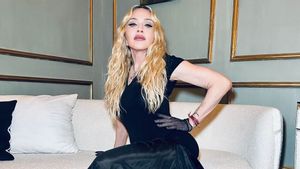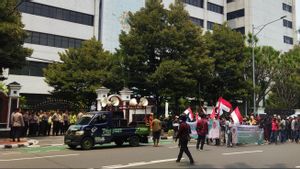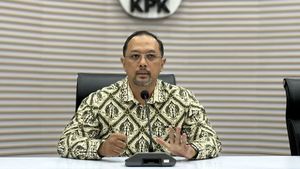JAKARTA - The 77th Independence Day of the Republic of Indonesia will be celebrated by all Indonesians soon. There is one interesting thing that the people of Indonesia always look forward to at every commemoration ceremony of the Independence Day of the Republic of Indonesia. Namely, the appearance of President Joko Widodo who always wears traditional clothes.
Meanwhile, Jokowi started wearing traditional clothes since the 72nd Independence Day of the Republic of Indonesia on August 17, 2017. At that time, Jokowi said that the use of traditional clothes was done to introduce that Indonesia has a rich culture of various ethnic groups.
While waiting for which traditional clothes Jokowi will wear during the commemoration of the Indonesian Independence Day this year, let's look at some of the traditional clothes that Jokowi has worn during the commemoration of the Indonesian Independence Day starting from 2017.
South Kalimantan Traditional Dress (2017)
The 72nd Indonesian Independence Day ceremony which was held on August 17, 2017 was the first momentum for President Jokowi to wear traditional clothes. Previously, Jokowi still wore formal clothes in the form of a suit during the Indonesian Independence Day ceremony.
When leading the ceremony, Jokowi was seen wearing traditional South Kalimantan clothes. The clothes worn resemble Malay clothes equipped with songket cloth or tapih bumin and a men's headband called laung. This dress is thick with typical Malay Islamic nuances.
Aceh Traditional Clothes (2018)
The Acehnese traditional clothing worn by Jokowi consists of a number of items that have meaning and are based on tradition. The head covering is called kupiah meukeutop which is made of red, green, yellow, and black tetron cloth.
The top outfit is called a bajee, which is a black long-sleeved top with kasab embroidery at the ends of the sleeves. And on the right shoulder paired boh ru bungkoh in the form of decoration and function as a package.
Balinese Traditional Dress (2019)
The following year, Jokowi wore traditional Balinese clothes. The black clothes combined with batik cloth as subordinates and headgear are known as Payas Agung.
This traditional dress is usually only used by Balinese people on important events such as weddings, mupload deha (maturity ceremony), pitra yadnya (ngaben), mesangih (tooth cutting ceremony), and other traditional ceremonies. Payas Agung worn by men usually combines luxurious songket fabric with a velvet suit with Balinese prada motifs and other accessories in the form of a kris.
East Nusa Tenggara Traditional Clothes (2020)
While attending the Commemoration Ceremony of the Proclamation of Indonesian Independence, President Jokowi wore a typical dress from the South Central Timor district in the province of East Nusa Tenggara. This traditional clothing is in the form of a woven cloth with a Kaif Nunkolo chain motif. The motif is a modification of the shape of a rhombus with a stem in the middle, this is interpreted as a source of water.
The edges are jagged, symbolizing the winding and hilly area. While the red color symbolizes the courage of the Nunkolo man. Betel nut bag slung on the side, becomes an aesthetic accessory.
Lampung Traditional Dress (2021)
Last year, Jokowi wore traditional Lampung men's clothes. This traditional dress is usually used for wedding processions. Men's traditional clothing is a white long-sleeved shirt combined with black trousers. Then, it is wrapped with a sarong tumpal, which is a typical Lampung sarong woven using gold thread on the outside. This sarong is used to cover the pants from the waist to the knees.
Jokowi also wears a square scarf called Khikat Akhir. This sarong is wrapped around the shoulder to cover the right shoulder which is pinned behind the belt accessory. As a complement, a distinctive hat is also attached with a color that matches the other accessories.
The English, Chinese, Japanese, Arabic, and French versions are automatically generated by the AI. So there may still be inaccuracies in translating, please always see Indonesian as our main language. (system supported by DigitalSiber.id)













